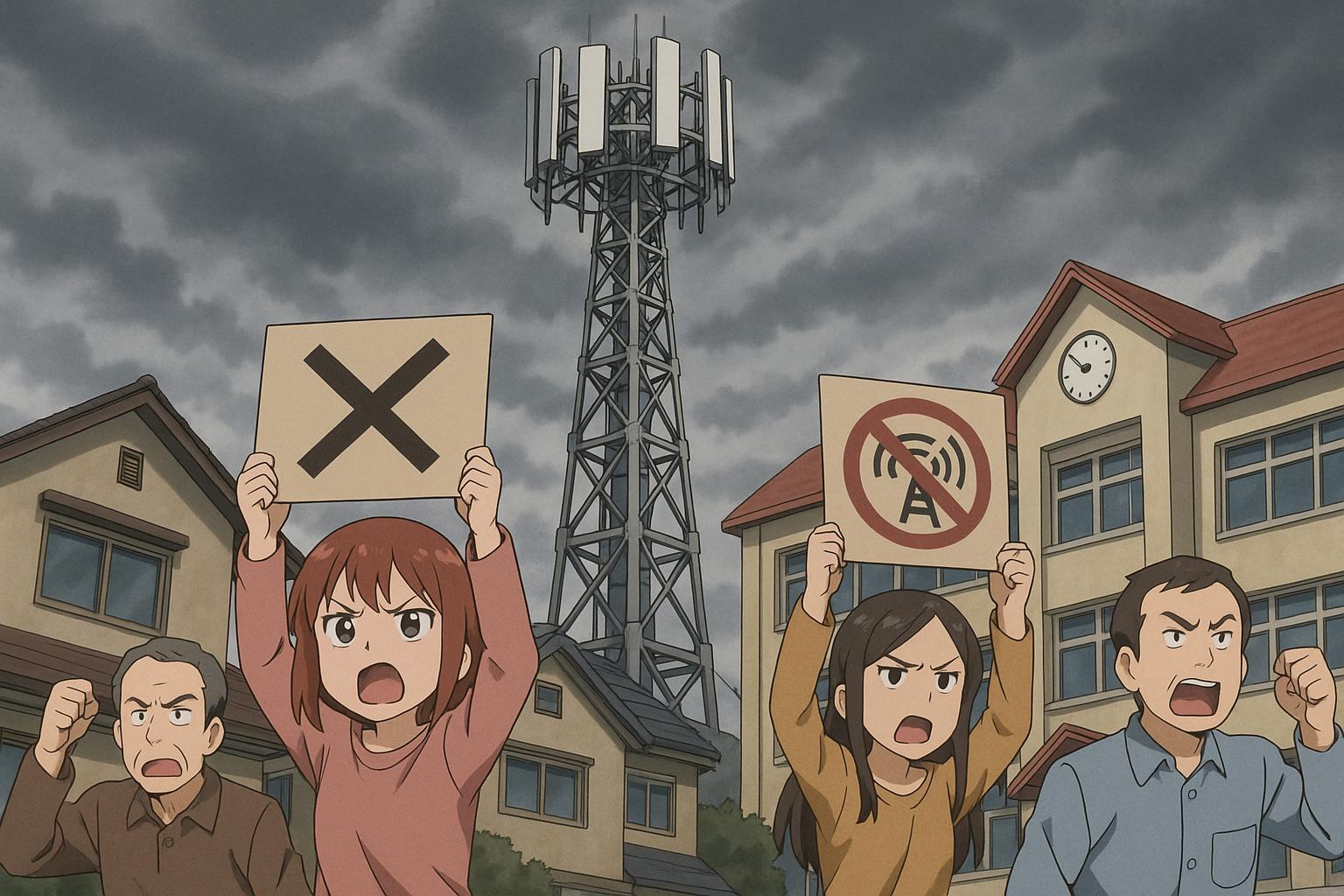Residents in Ormesby are expressing significant frustration over the unexpected installation of a large telecommunications mast that looms uncomfortably close to their homes and local schools. This recent development, situated off Normanby Road, has sparked complaints about incessant noise, disruptive vibrations, and uninvited alterations to the neighbourhood’s visual landscape. Many residents now fear potential impacts on property values, with some describing the structure as an "eyesore."
The mast, which is a temporary replacement for an existing one atop the derelict Spencerbeck House—set for demolition—was erected on land owned by Beyond Housing. The company has disclosed it granted a 12-month licence to MBNL (Mobile Broadband Network Limited) for the site, which provides infrastructure services for mobile operators like EE and Three. However, local accounts suggest that its presence leaves little room for complacency. One resident, Sue Cox, reported that workers on-site indicated the mast could remain for as long as 25 years, contradicting prior assumptions about its temporary nature.
Further grievances have surfaced from long-time residents such as 81-year-old Rita O'Brien, who lamented the loss of peace in her home due to relentless vibrations and noise, stating, "I can hear and feel it, even over the noise of the traffic." Her son described the sense of despair that the installation has imposed on his mother's quality of life, highlighting a sentiment shared among many affected families.
Local community members have rallied to voice their discontent, with efforts to gather signatures for a petition against the mast. Residents have expressed frustration over the lack of prior notification or consultation regarding the installation, raising serious questions about transparency and community engagement in the planning process. One anonymous resident noted, “We as a community have been to everyone for a response to our questions, but we are being ignored.”
This incident underscores a broader issue in telecommunications infrastructure development across the UK, where many masts can fall under ‘permitted development’ rights, allowing installations to proceed with minimal regulatory oversight. While local authorities and organisations like Ofcom have delineated guidelines that encourage consultation with communities and emphasise safety, these recommendations often remain unheeded.
Beyond Housing has acknowledged that MBNL "failed to inform" them or local residents prior to the installation of the mast. They also clarified that while MBNL possessed certain rights to put up the mast without seeking full planning permission, there was an expectation that residents would be informed beforehand. This highlights a critical gap in the communication between parties involved in such developments, often to the detriment of local communities.
Additionally, the situation raises important points regarding regulatory frameworks surrounding telecommunications infrastructure. Local councils, as detailed in various official communications, are tasked with handling planning permissions for installations. Although many masts do not require formal planning consent, they should still adhere to guidelines aimed at minimising visual impact and safeguarding public concerns—principles that seem to have been overlooked in Ormesby.
As the community continues to seek answers, it has emerged that MBNL must decommission the mast atop Spencerbeck House by the end of May—an indication of the pressing timeline as construction projects unfold in parallel. Despite repeated attempts, inquiries seeking direct commentary from MBNL regarding the residents’ concerns went unanswered. It remains to be seen how this issue will be resolved, and whether local voices will be amplified in future telecommunications developments.
In a landscape where digital connectivity is increasingly crucial, the tensions between progress and community wellbeing take centre stage. As local residents stand firm in their objections, the critical need for better communication and engagement from telecommunications companies becomes painfully evident, prompting a reevaluation of how such projects are managed against the backdrop of public sentiment and safety.
Reference Map
- [1] Paragraphs 1, 2, 3, 4, 5, 6, 7
- [2] Paragraph 8
- [3] Paragraph 9
- [5] Paragraph 10
- [6] Paragraph 11
- [7] Paragraph 12
Source: Noah Wire Services
